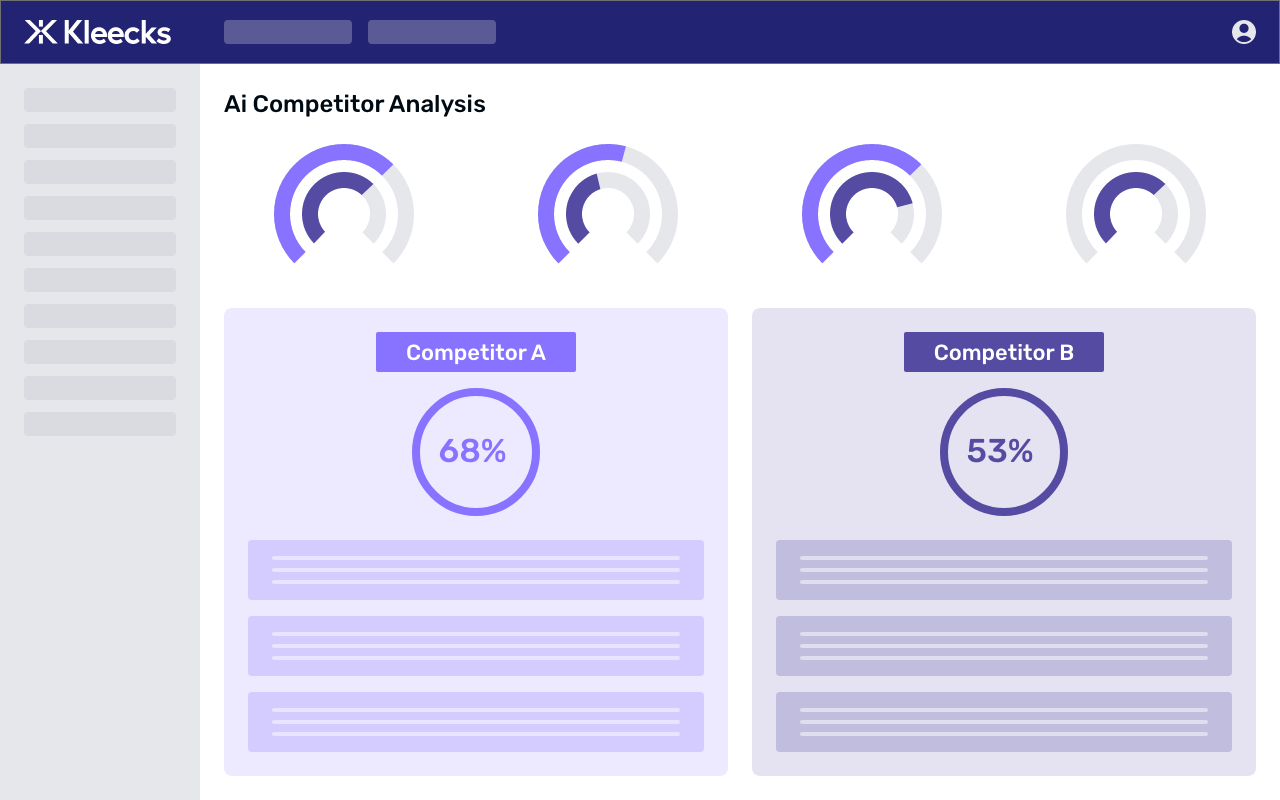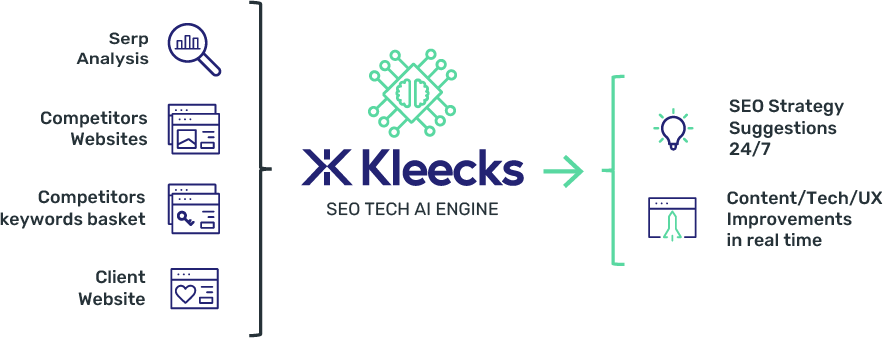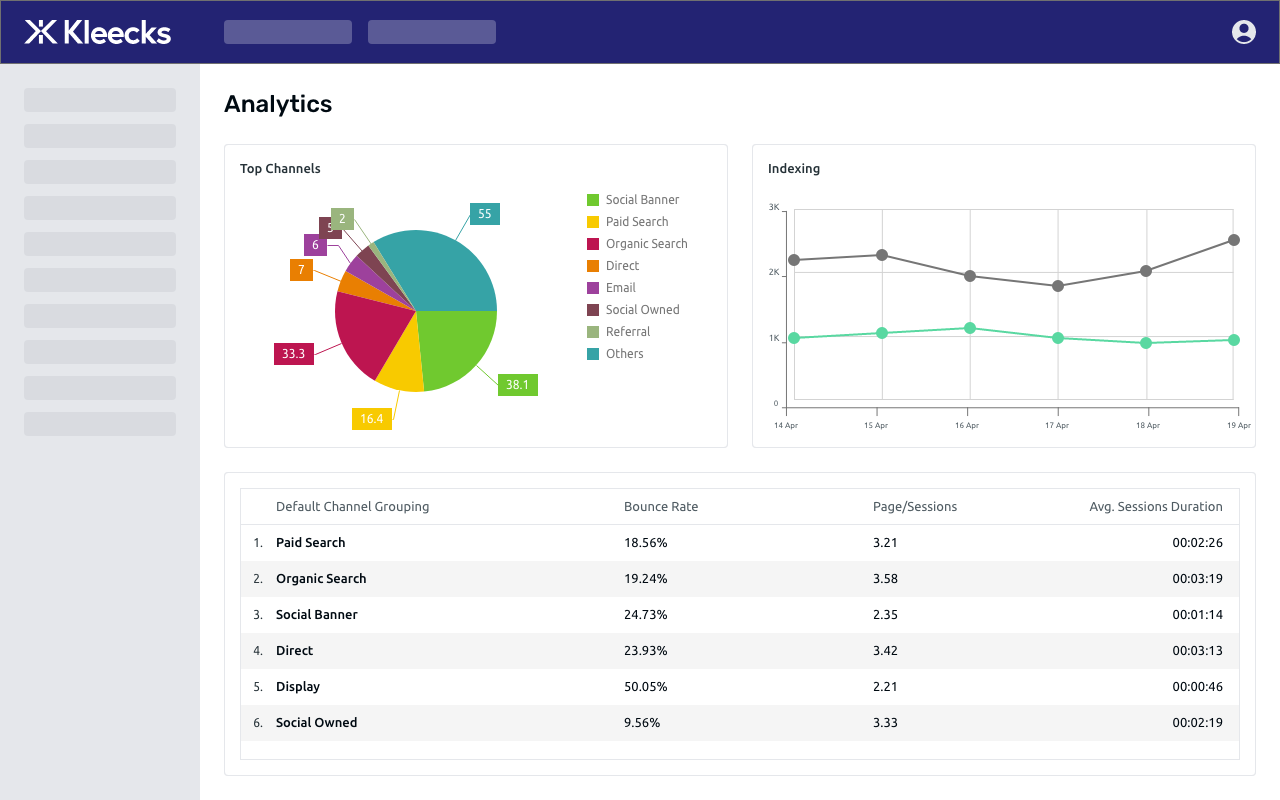A wide range of features to improve enterprise digital strategy
Competitive
Analysis
Kleecks’ competitive analysis module is one of the cornestone features of the solution.
Upon activation, Kleecks is configured by entering information about the customer’s competitive environment, including markets, keywords, competitors, and other strategic data.
These databases feed the Kleecks machine learning engine and specify which information sources to collect and analyse.
After analysing the data through gap mapping, Kleecks suggests the next improvement actions that need to be implemented with a simple click.
The Kleecks data lake is filled with a vast amount of competitive data that can be analysed for competitive intelligence. Depending on the client’s needs, Kleecks can extract different information such as product prices, product stock updates, and other relevant business intelligence data.

SEO
Kleecks’ server-side approach enables the implementation of all SEO technologies and strategies on your website.

Kleecks’ server-side approach enables the implementation of all SEO technologies and strategies on your website.
Kleecks can be configured to manage and automate all SEO optimisation, reducing effort and increasing monitoring of all activities.
Kleecks can fix URL issues, 4xx errors, canonical, hreflang, JS issues, and more.
CRO
Conversion rate optimisation (CRO) is a mix of different activities and solutions, and Kleecks has various features that can help boost your continuous improvement strategy.
A/B testing
Experience the versatility of Kleecks’ A/B testing module, which offers both JavaScript-based layers and HTML code creation.
Use A/B testing to assess customer experience, SEO impact, and accessibility issues, optimising your website for performance and user satisfaction.
UX/UI improvements
Kleecks equips your business with the tools needed to collect and analyse user interaction data, identify pain points, and implement changes for an optimised, user-friendly website.
Enhance your digital presence by simplifying the user interface, improving responsiveness, and adding features that cater to your users’ needs.
Landing pages creation
Use Kleecks Builder to quickly launch and optimise landing pages.
Our intuitive drag-and-drop builder streamlines the process, allowing seamless integration with Google Analytics and email marketing tools.
Harness the power of AI insights to create high-converting landing pages that elevate your brand.
Content personalisation
Deliver an unparalleled customer experience with Kleecks’ omnichannel personalisation and experimentation.
Customise every interaction across your website, dynamically restructuring page layouts and elements to cater to each visitor’s preferences. Achieve a cohesive experience throughout your ecosystem, tailored to each user’s position in the customer journey.
Speed performance & Core Web Vitals
Kleecks’ speed performance module is based on two main approaches to optimising page performance.
The first is focused on search engine bots and acts mainly on the optimisation and elevation of content that is really interesting for bots (text, images, and code structure), limiting assets that slow down or block the crawlability of the site.
The second, based on various techniques, including machine learning, is dedicated to user performance, fixing problems that impact Core Web Vitals and guaranteeing very high performance scores.
The two approaches always work in synergy with each other, avoiding the generation of problems such as cloaking.
Kleecks, thanks to its dynamic pre-render engine, is able to improve the performance of sites developed on JavaScript frameworks or built with PWA (Progressive Web Application) frameworks.
Content generation and translation
Kleecks uses its own AI-powered platform to help you create textual content for your business needs.
Kleecks generates high-quality and relevant text from data and keywords, using natural language generation techniques.”
Kleecks also understands the context, purpose, and audience of your text, and adapt the tone, style, and voice accordingly, using OpenAI LLM (Large Language Models) algorithms.
Kleecks creates textual content for various domains and formats, such as blogs, articles, social media posts, product descriptions, product titles, and more.
Our AI model can help you create SEO-focused text that boosts your traffic, conversions, and reputation.

By using advanced NLP techniques, AI can understand what your audience is looking for and provide them with relevant and useful content.
Kleecks can also tailor the text to your brand’s voice and tone, and optimise it for search engines by adding keywords, meta tags, headings, and links.
AI can also track and analyse the results of your text and give you insights and recommendations on how to improve it.
Kleecks’ AI model can analyse images to generate descriptive and relevant alt text that can be read by screen readers and search engines.
Additionally, our AI can optimise image paths using keywords, hyphens, and lowercase letters, and avoid using spaces, underscores, or special characters.
Kleecks can also compress and resize images to improve loading speed and user experience, as well as add meta tags, captions, and titles to enhance visibility and search engine ranking.
Accessibility
Kleecks allows for the direct fixing of accessibility errors via the platform, without the need for CMS implementation.
Kleecks can automate the important process of fixing accessibility issues, including:
Missing alt text for images
Missing or incorrect headings structure
After fully addressing the main accessibility issues, Kleecks enables 24/7 monitoring of any new issues to help reduce fines and other problems related to country-specific laws.
Manual testing complements the results of automatic testing and provides an o
verall evaluation of a website’s accessibility.
Kleecks can help identify and address usability issues experienced by users with disabilities.
Kleecks can also identify and address issues related to overall UX and design, such as navigation and content organisation.
Kleecks can help identify and address complex interactions that may not be detected by automatic testing tools.
Kleecks can also help identify contextual issues that may not be detected by automated testing alone.
Kleecks can evaluate the effectiveness of alternative text and multimedia descriptions for users with visual impairments.
Kleecks can also evaluate the effectiveness of captioning and audio descriptions for users with hearing impairments.
Kleecks can help identify issues with the implementation of accessibility features, such as keyboard navigation.
Data & analytics
Kleecks is capable of managing vast amounts of information related to site activity.
Kleecks is capable of managing a vast amount of information related to site activity, including sessions, search intent, and other data concerning site health and customer experience. However, that’s not all. Thanks to the competitive analysis module, Kleecks also keeps a watchful eye on the competitive arena and strategies being executed, to remain a top performer. This data can be extracted and linked to enterprise data lakes, to enhance the enterprise data layer.
Kleecks can accelerate the migration to GA4 and fixing of the data layer. Kleecks enables server-side tracking on a variety of analytics tools, including GA4, Matomo, Plausible Analytics, and Simple Analytics.
The primary advantages include enhanced data management, improved page loading speed, diminished ad-blocker issues, and heightened data precision.
Tech integrations
Domains and CMS merge
Kleecks enables the unification of front-ends from different domains or subdomains (e.g. support.yourbrand.com or yourbrand.eu) into a single domain (e.g. www.yourbrand.com) without the requirement for CMS or backend applications. This capability can significantly impact the lifecycle of backend systems used within the organization.
Systems interoperability
Thanks to Kleecks’ reverse proxy approach, which positions itself as a technology solution on top of all systems (e.g. CMS, other SaaS, etc.) used by our customers, Kleecks facilitates improved interoperability between different systems within the digital ecosystem. This includes the communication of image updates between Pimcore and Akamai, which helps improve cache management.

